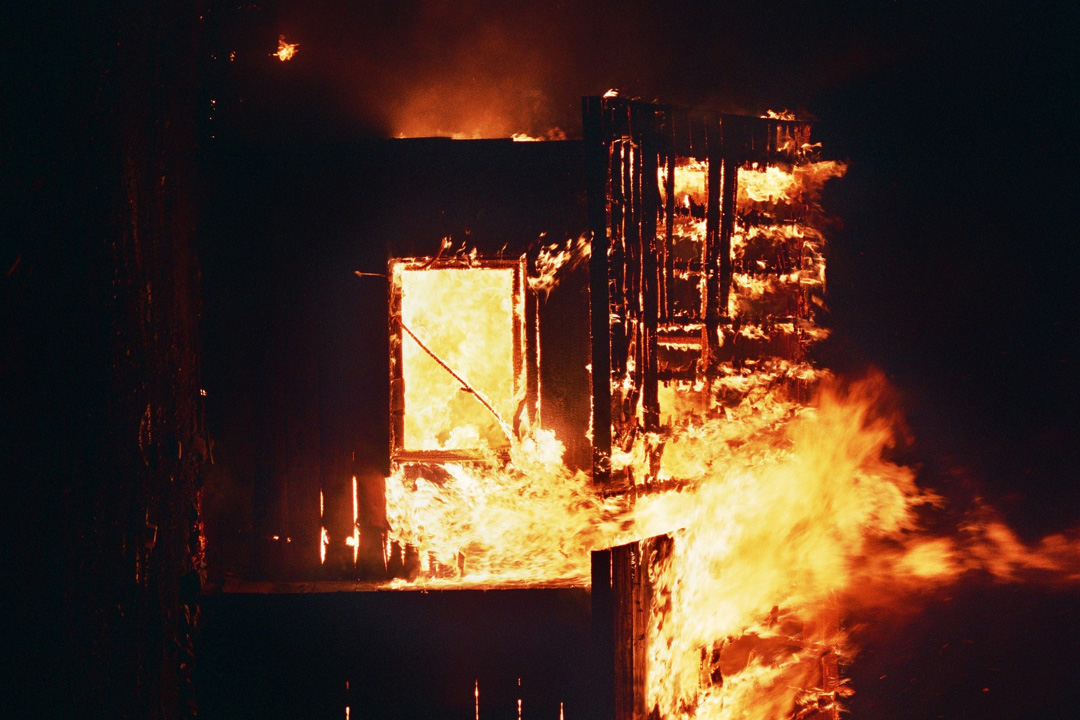
Can You Save Your Home and Belongings from California Style Fires?
Possibly yes!
Fires are extreme and often unimaginable in their ferocity. They are influenced by a multitude of factors, some of which you can control and others you can’t. However, even for factors beyond your reach, some can be mitigated by intelligent planning.
Fires often move fast. Most Americans live in very combustible homes; from the materials they’re constructed of to their contents. Once sufficiently started, a fire can feed on those materials and intensify rapidly. If your family is unprepared, your cozy, cherished home can turn into a deathtrap. Luckily, humans and animals have an instinct to flee from danger and it works most of the time. It generally fails when there either is no forethought as to when and where to escape to, or when snap decisions are made as a fire is underway.
Many people don’t realize that severe fire injuries and death are often not directly the result of flames. Heat injury and asphyxiation are major causes as well. So when thinking about surviving a fire, within a home or on an escape route, breathable air and protection against intense heatwaves are also critical to planning.
Another factor to account for is that a burning structure loses structural stability and can suffer from partial or complete collapse. Even a partial or minor collapse that does not fall on inhabitants can be deadly by blocking exits they need to access.
Yet, despite the devastation of a single house fire and the unprecedented catastrophe of the present California wildfires in the LA area, property/house fires do not have to be left to chance or approached as beyond one’s control. For most families, there is consciousness about the possibility of a fire, but it seems to them, to be implausible and as a result, gets little thought and planning. Most homes have fire extinguishers and smoke alarms, but little if anything else. If a fire breaks out, most of the time, escape and preservation of valuables is improvised.
For your family’s sake, a home fire must not go without forethought, especially in wildfire prone areas. Don’t wait to be a victim when you can be proactive and be a victor. Consider some of the tools at your disposal to protect your home and valuables including:
Garden/lawn sprinklers
These serve two purposes: the obvious objective of keeping shrubs/trees/lawn wet to prevent flames from igniting them and to create a humidity/damp zone which can deter flying embers.
High pressure water supply
This typically requires a private well and a high pressure pump. With an adequate water supply, the system can be used to wet down your home and extinguish flames more in line with what firefighters do.
House fire wraps and gels
If flame and heat can’t get to your home’s structure, it can’t burn. These systems literally wrap your home in protection and stand up to surprisingly intense flames.
Rooftop sprinklers
Literally a tool to wet your roof so that landing embers are immediately extinguished, they also contribute to creating a humidity/damp zone around the building envelope.
Fire Bunker
This is an underground fire-safe containment, primarily used to protect valuables. A State of Readiness Fire Bunker can also be designed as a refuge of last resort for animals and humans. When there is notice that a fire like a wildfire has the potential to reach your property and there is a window of time before evacuation, the bunker is an easily accessible “vault” to place assets needing protection. To double as an emergency shelter for living beings, very special design criteria has to be incorporated. State of Readiness Refuge Rooms can also fulfill this function if designed for this purpose. For more in-depth information, ask us for help.
When a single home catches fire there is one set of protocols to follow and when a neighborhood burns or is in the path of a traveling fire, there are other protocols. Either way, following well-made, rehearsed procedures, formulated into to a Fire Readiness Response Plan, can potentially save your home and belongings and certainly save all beings that inhabit it.
Details of a Fire Readiness Response Plan are extremely specific to each home/family (just like a Family Readiness Evaluation) and span many factors. It’s a comprehensive plan that is executable by your family and takes their safety into account above all else, as well as items you must protect and secondary items you would like to protect. Some of the major points that are considered include:
- regional fire issues (for example, California suffers wildfires every year)
- type of property and terrain
- accessibility in/out
- property size
- proximity of neighbors and other structures
- property maintenance
- type of materials your home is made of, including the roof
- who lives there and their physical ability to evacuate quickly
- pets and other animals
- water sources including ponds, streams, or a pool
- budget
- much more
“…chance favors only the prepared mind.” As the raging LA fires have brutally demonstrated, a home fire is too catastrophic to be unprepared for. Ask us about a custom Fire Readiness Response Plan for your family and home.
